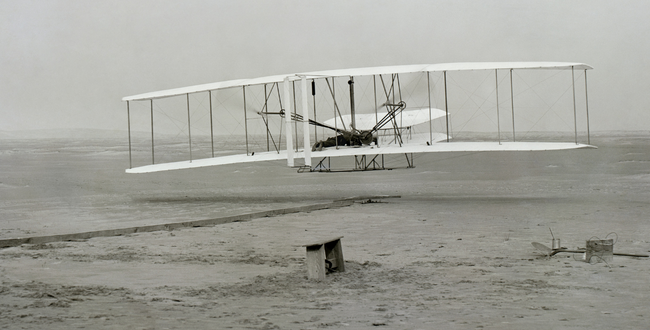Blog
Subscribe
Join over 5,000 people who receive the Anecdotally newsletter—and receive our free ebook Character Trumps Credentials.
Categories
- Anecdotes
- Business storytelling
- Collaboration
- Communication
- Corporate Storytelling
- Culture
- Decision-making
- Employee Engagement
- Events
- Fun
- Insight
- Leadership Posts
- News
- Podcast
- Selling
- Strategy
Archives
- March 2024
- December 2023
- November 2023
- October 2023
- September 2023
- August 2023
- July 2023
- June 2023
- May 2023
- April 2023
Years
159 – Try and try and try again
Podcast: Play in new window | Download
Subscribe: Apple Podcasts | Spotify | RSS
If you truly care about your idea and persist with it, you won’t need every available resource or qualification to innovate. Listen to hear the story behind the Wright brothers’ first flight.
This week on Anecdotally Speaking, Mark shares a story that combines negative and positive stories he could have told independently. In doing so, he provides examples of what to do and what not to do, particularly when innovating.
The story follows the attempts of two different teams to achieve the first powered, controlled flight—teams led by Samuel Pierpont Langley and the Wright brothers. It reminds Shawn of the story of how James Dyson designed and produced the first bagless vacuum cleaner, which he shared in episode 032 – Dyson innovation really sucks.
For your story bank
Tags: failure, hard work, ideas, innovation, persistence, problem solving, qualifications, resources, success
This story starts at 01:07
In the early 1900s, humankind had never flown in an aircraft, but people widely considered it possible. So it became a race: who could be the first to achieve a powered, controlled flight? And teams all over the world were attempting it. It was the scientific challenge of the age.
A team in the United States, led by Samuel Pierpont Langley, was the standout. Samuel was a scientist who had already made a name for himself in astronomy. He had been tinkering with aviation for quite a few years. He also had a seat at Harvard and worked at the Smithsonian.
Samuel’s team was well funded, having been granted $50,000 ($2 million today), and had easy access to technical expertise. Their success was so highly anticipated that the press followed them around and published daily updates in their newspapers.
Finally, they got to the stage where they could do a test flight. It occurred over the Potomac River on the 7th of October, 1903. Their aircraft was launced from a catapult off a pontoon in perfect conditions
But it failed. The aircraft’s wing hit the pontoon, and it fell like a sack of concrete.
They rebuilt the aircraft and conducted a second test flight on the 8th of December. This time, the back half of the aircraft fell off during the launch and into the river.
Another team was working out of North Carolina and led by two brothers who owned a bicycle store—Orville and Wilbur Wright. They were funded only by the store’s proceeds.
None of the team members had a college education or formal technical training. But they’d fallen in love with the idea of the ability to fly and wanted to understand it.
They took their models and prototypes out daily and tried to fly them up to five times a day. They crashed, took spare parts and rebuilt them. They tried and tried and tried again. And then, on the 17th of December 1903, the Wright Flyer flew 852 feet, and they won the race.
No one was paying any attention to them, so it wasn’t published that they’d succeeded until two or three days later. And as soon as news reached Samuel Pierpont Langley, he quit.
About Anecdote International
Anecdote International is a global training and consulting company, specialising in utilising storytelling to bring humanity back to the workforce. Anecdote is now unique in having a global network of over 60 partners in 28 countries, with their learning programs translated into 11 languages, and customers who incorporate these programs into their leadership and sales enablement activities.
